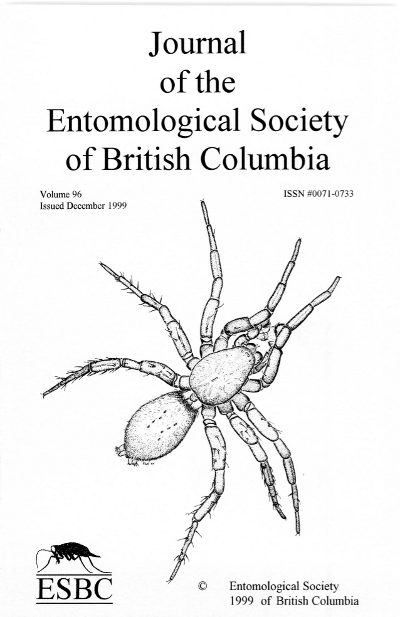Is it possible to use mass-reared or field-collected diapaused codling moth larvae, Cydia pomonella (Lepidoptera: Tortricidae), to predict spring biofix?
Abstract
Codling moths, Cydia pomonella (L.), from a mass-reared colony induced into diapause and from locally collected overwintering populations were placed in the field inside mesh cages in the fall of 1997 to determine whether they would synchronize their spring emergence with the wild population and thus could be used as a tool to set biofix. Our results show that the laboratory-reared moths emerged at approximately the same time regardless of the location where they spent the winter. Locally collected (and caged) wild material always emerged later than the remaining wild population and thus was no better at predicting biofix than were laboratory-reared insects.
Key words: Cydia pomonella; diapause; biofix; emergence
Downloads
Issue
Section
License
Authors who publish with the Journal of the Entomological Society of British Columbia agree to the following terms:
-Authors retain copyright and grant the journal right of first publication with the work simultaneously licensed under a Creative Commons Attribution License that allows others to share the work with an acknowledgement of the work's authorship and initial publication in this journal.
-Authors are able to enter into separate, additional contractual arrangements for the non-exclusive distribution of the journal's published version of the work (e.g., post it to an institutional repository or publish it in a book), with an acknowledgement of its initial publication in this journal.
-Authors are permitted and encouraged to post their work online (e.g., in institutional repositories or on their website) prior to and during the submission process, as it can lead to productive exchanges, as well as earlier and greater citation of published work (See The Effect of Open Access).


